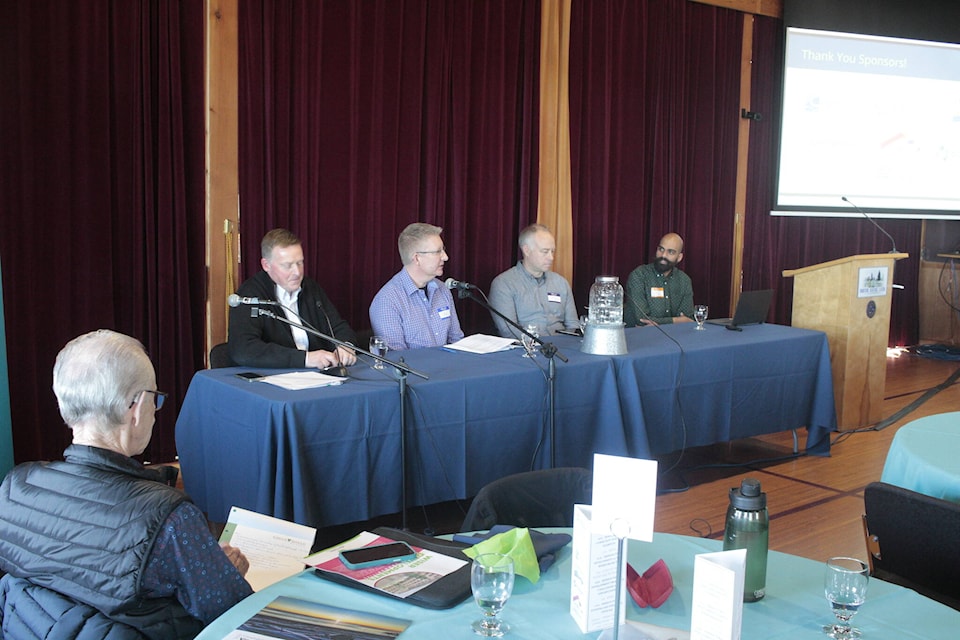The Vital Conversation on Housing event put on by the Campbell River Community Foundation Friday gave audience members some insight into how affordable housing projects can come to fruition.
However, some in the audience were concerned that other factors were preventing people from accessing housing that was affordable to them.
One audience member, who said she was 76 years old while still in charge of a non-profit society working on housing projects said that “young people have had to move. If we can’t get rid of the red tape, we’re going to die before the project gets off the ground.”
Another told the panel that “we’re not being paid enough money to be able to afford these rentals.”
However, overall, the reaction from the audience sympathetic.
The four panels on Friday showed that housing is a nuanced sector, and that many hurdles exist to getting truly affordable housing to the people who need it. One panel looked at the challenges and opportunities within the development process.
“We do need more supply, the challenge is we need the right supply,” said panelist Brian McCaulay, who added that the private sector has been delivering supply, but that it has been “the wrong supply.”
One solution panelist Ian Buck mentioned was not requiring public hearings for every development proposal. In a perfect world, the proposals would not need to go to the public because they would be in line with the community’s Official Community Plan (OCP) — which is an expression of the community’s chosen direction. However, as one audience member stated, some communities have OCPs that are over 30-years-old or none at all.
“It’s terrible to have old official community plans,” McCaulay said. “Legislation requires that you consider updating every five years. Not sure all local governments do a good job of that.”
“We don’t do the planning frequently enough to have a clarity for all the citizens about what the city wants to be when it grows up,” added panelist Maris MacDonald.
Money was another touchpoint for the panelists and the audience. MacDonald brought up the difficulty of defining “affordability,” saying that, depending on the community, it would mean different things.
“Often the models don’t work,” he said.
One audience member, when asking about how the rents are determined for affordable housing units, said that while rents in Campbell River are at or close to rental rates in Vancouver, the income rates in this community are much lower than those in the bigger centres.
“We’re not being paid enough money to be able to afford these rentals,” she said.
However, McCaulay said that the rental rates are either set by “basic economics, supply and demand,” or by the developer’s need to recoup their costs.
“There may be room to reduce rates, but there may not be enough room between what the market might consider affordable and the actual cost of delivery,” he said. “The only way the developer can charge that rent is if there’s demand for it.”
For non-profits, however, there are more avenues to help reduce the overhead and bring down rents. For the last panel of the day, panelists discussed these funding and financing options. One idea brought to the table by Dr. Shelley Cook of the Cowichan Housing Association would be for local governments to establish a housing service, as the Cowichan Valley Regional District did in 2018. That service has a number of funds, including a rental housing capital contribution fund which allows them to set aside money to help reduce housing project overhead costs, which in turn reduces rent.
Cook said that there is a need to “stop talking like it’s an emergency and start acting like it’s an emergency. Quite frankly, I’m tired of having that conversation.”
Other options discussed included reinvesting in community assets like church buildings or Legions, using community bonds for housing and for the provincial and federal government to enact right to buy legislation, which would allow non-profits to quickly respond when potential housing buildings go up for sale.
While there were a few solutions presented, the mood at the end of the day was that this was the first of many conversations and that it would take the community working together to make a difference.
